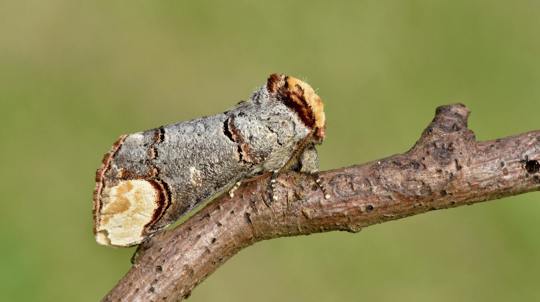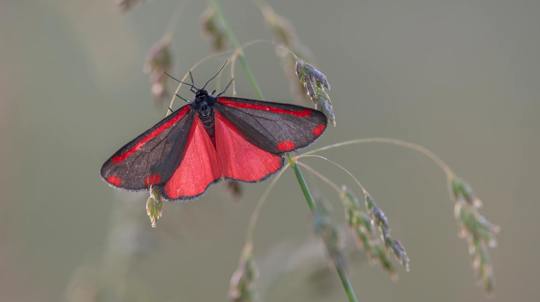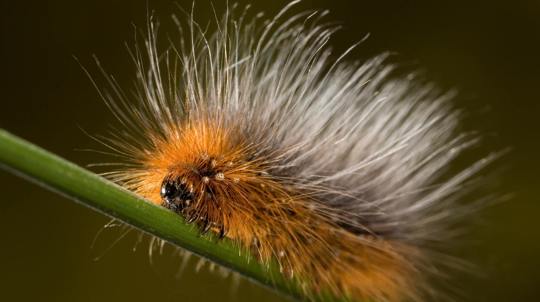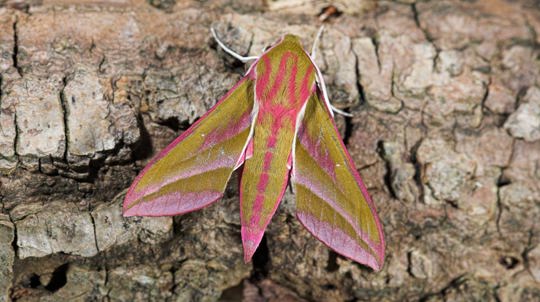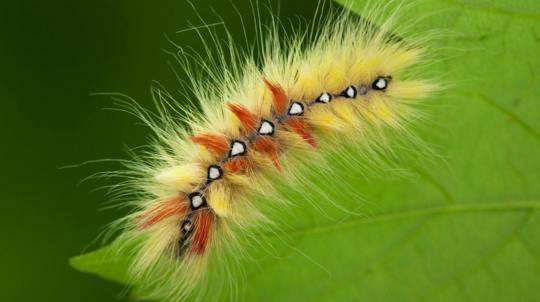Adult poplar hawk-moths do not feed but are attracted to light.
UK hawk-moth identification and facts

Content manager
Hawk-moths are some of the largest and most recognisable moths in the UK. Learn to tell which is which with our visual guide to 10 of the most commonly encountered UK species.
1. Poplar hawk-moth (Laothoe populi)
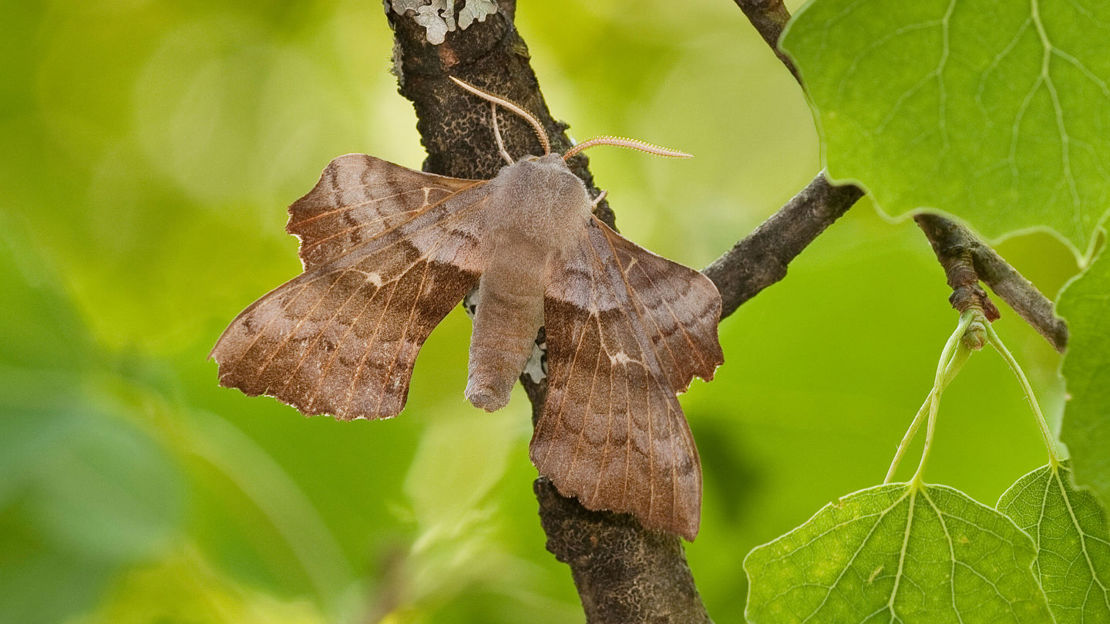
How to identify
The greyish-brown poplar hawk-moth rests with its hindwings visible beyond the leading edge of the forewings and its abdomen curled upwards, giving it an unusual profile. When alarmed it flashes brick red patches on the hindwings which are usually hidden. Some individuals can be tinged pink or purple.
Size
Wingspan can be up to 9cm across.
When to see it
On the wing from May - July but a second generation may emerge from August - September.
Where to find it
Thought to be our commonest hawk-moth. Widespread across the UK in most habitats including woodlands, parks and gardens.
Caterpillar foodplants
2. Privet hawk-moth (Sphinx ligustri)
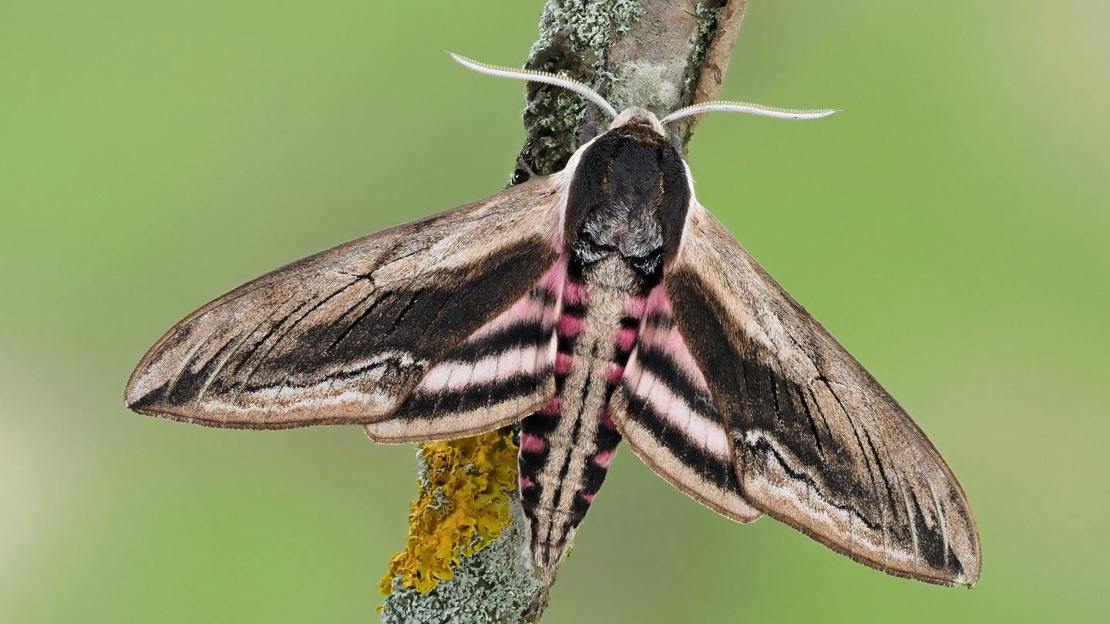
How to identify
The privet hawk-moth is our largest resident hawk-moth. Look for the chocolate brown centres of the forewings and dark thorax. When resting the wings are usually pulled back alongside the body. When alarmed the wings open to reveal striped, pink-tinged hindwings and a pink and black banded abdomen.
Size
Wingspan can be up to 12cm.
When to see it
On the wing from June - July.
Where to find it
Common across the south of England, parts of Wales and East Anglia, becoming scarce further north. Absent from Northern Ireland and Scotland. Found in a number of habitats including woodland, hedgerows, parks and gardens.
Caterpillar foodplants
Mainly feeds on privet but also ash, lilac, honeysuckle, holly, guelder rose and some garden plants. Adults nectar on night-scented flowers.
3. Hummingbird hawk-moth (Macroglossum stellatarum)
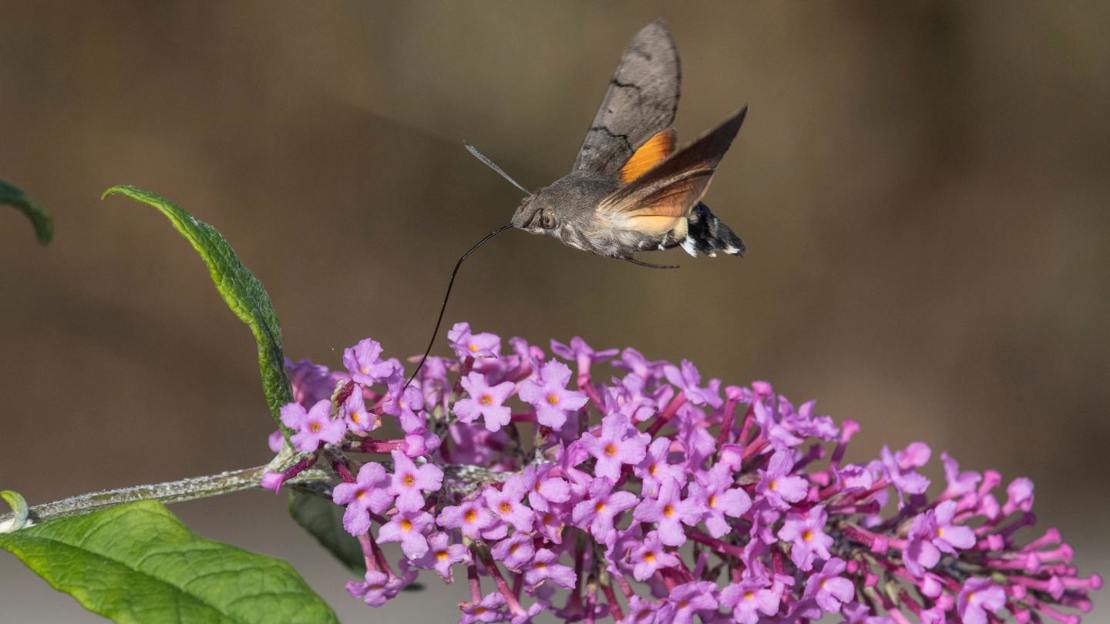
How to identify
It's the behaviour of this species that first gives it away; its distinctive hovering flight lends the moth its name. It has a brown head and forewings, orange hindwings and black and white markings towards the tail end.
Size
Wingspan can be up to 5.8cm.
When to see it
On the wing in greatest numbers from June - September.
Where to find it
This moth is a summer visitor to our shores, migrating from southern Europe, although some adults seen later in the summer may be the result of breeding here. In good years it can be spotted anywhere in the UK. It's a common visitor to gardens with plenty of flowering plants.
Caterpillar foodplants
Caterpillars feed on bedstraws and wild madder. Adults probe for nectar with their long tongues from buddleia, honeysuckle, red valerian, lilac and other nectar-rich flowers.
4. Broad-bordered bee hawk-moth (Hemaris fuciformis)
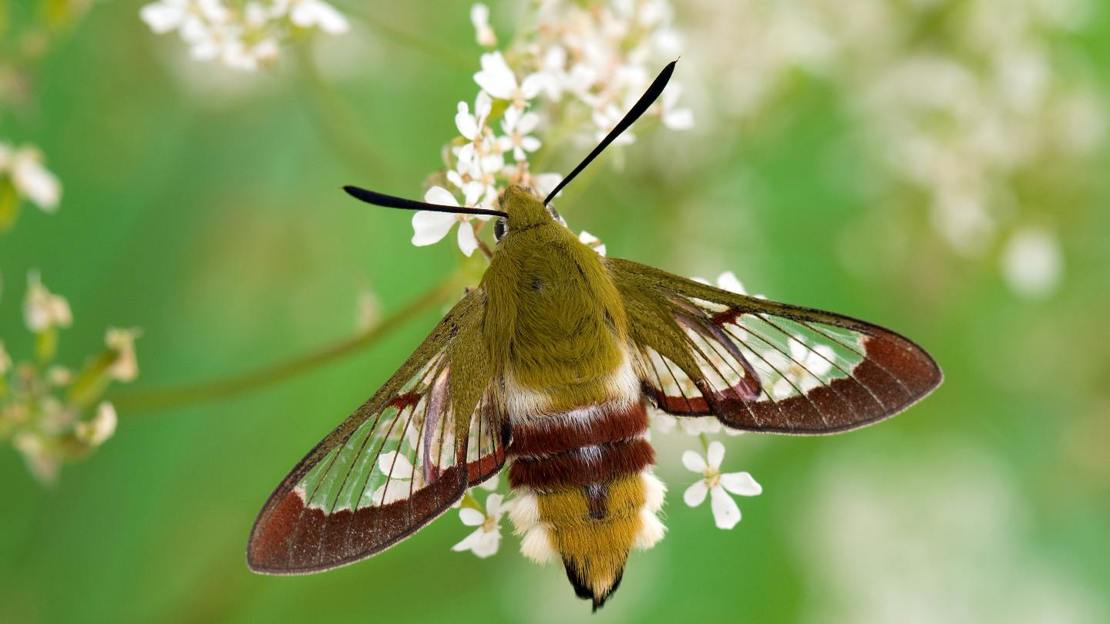
The similar but rare narrow-bordered bee hawk-moth (Hemaris tityus) which, as the name suggests, lacks the prominent, thick border to the wings.
How to identify
At first glance this moth could be mistaken for a bumblebee. Look for transparent wings bordered on the trailing edges by a rich reddish-brown. The greenish head and thorax is then separated from the yellow and black-tipped tail end by two red-brown bands. It also has thick black antennae.
Size
Wingspan can be up to 4.8cm.
When to see it
A day-flying species on the wing from May - June.
Where to find it
Somewhat scarce and restricted mainly to southern, central and eastern parts of England, with strongholds in East Anglia and some scattered records from Wales and further north. Found in open and coppiced woodland, hedgerows and gardens.
Caterpillar foodplants
Caterpillars mainly feed on honeysuckle but also bedstraws and snowberry. Adults feed on the wing from nectar-rich flowers.
5. Elephant hawk-moth (Deilephila elpenor)
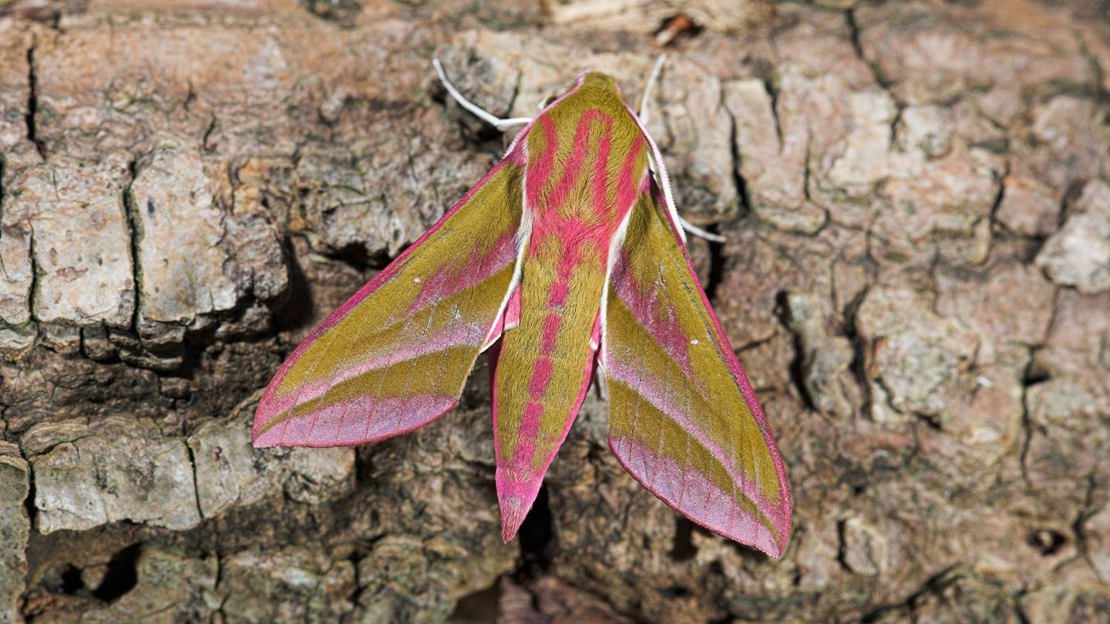
This moth is named after the trunk-like appearance of its caterpillar's head which it can retract into its bulbous neck.
How to identify
The elephant hawk-moth is pretty unmistakable with its bright pink and green colouring. Look for the pink line running down the centre of its abdomen to quickly tell it apart from its smaller relative (below).
Size
Wingspan can be up to 6cm.
When to see it
On the wing from May - August.
Where to find it
Common and widespread across the UK, with its range increasing in the north. Found in almost all habitats, including woodlands, hedgerows and gardens.
Caterpillar foodplants
Willowherbs, fuchsias, Himalayan balsam, bedstraws and enchanter's nightshade. Adults take nectar at night, particularly from honeysuckle.
Want to brush up on your ID skills?
Take a look at our range of wildlife swatch books for help with birds, butterflies and more.
Shop now6. Small elephant hawk-moth (Deilephila porcellus)
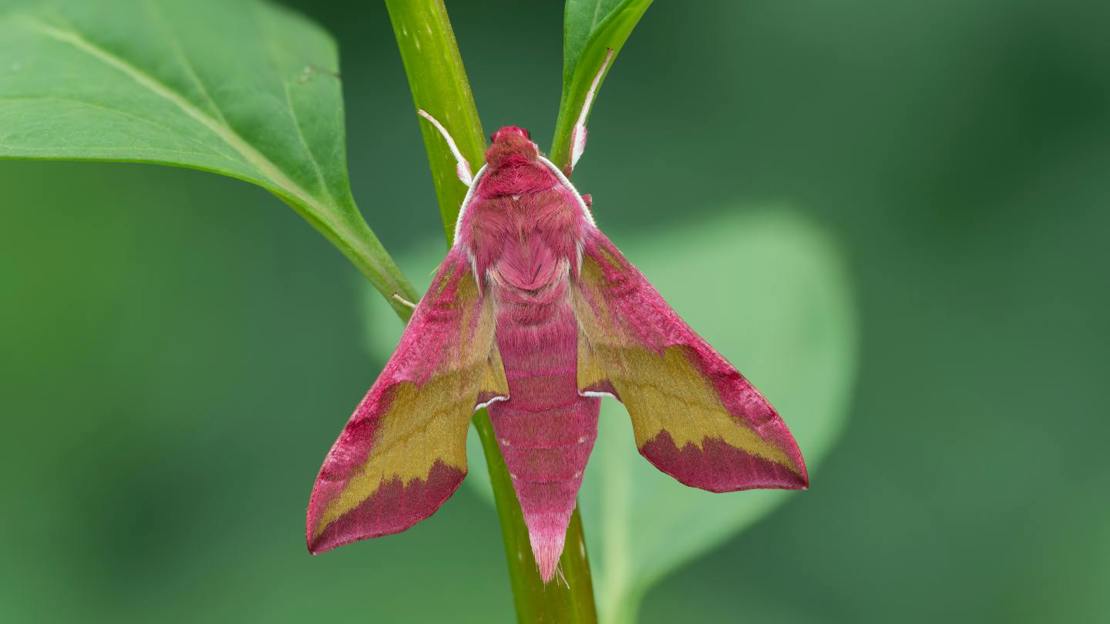
How to identify
While it shares the green and pink colouring of its larger cousin (above), the small elephant hawk-moth can be distinguished by its often much pinker body (which lacks the telltale stripe down the centre) and the different patterning and shape to the forewings.
Size
Wingspan can be up to 5cm.
When to see it
On the wing from May - July.
Where to find it
Most common across England and Wales, becoming more scarce north of the Humber and in Northern Ireland. Found mainly in grassy habitats, heathland and sometimes gardens.
Caterpillar foodplants
Mainly bedstraws but sometimes also rosebay willowherb. Adults take nectar at night particularly from honeysuckle and rhododendron flowers.
7. Pine hawk-moth (Sphinx pinastri)
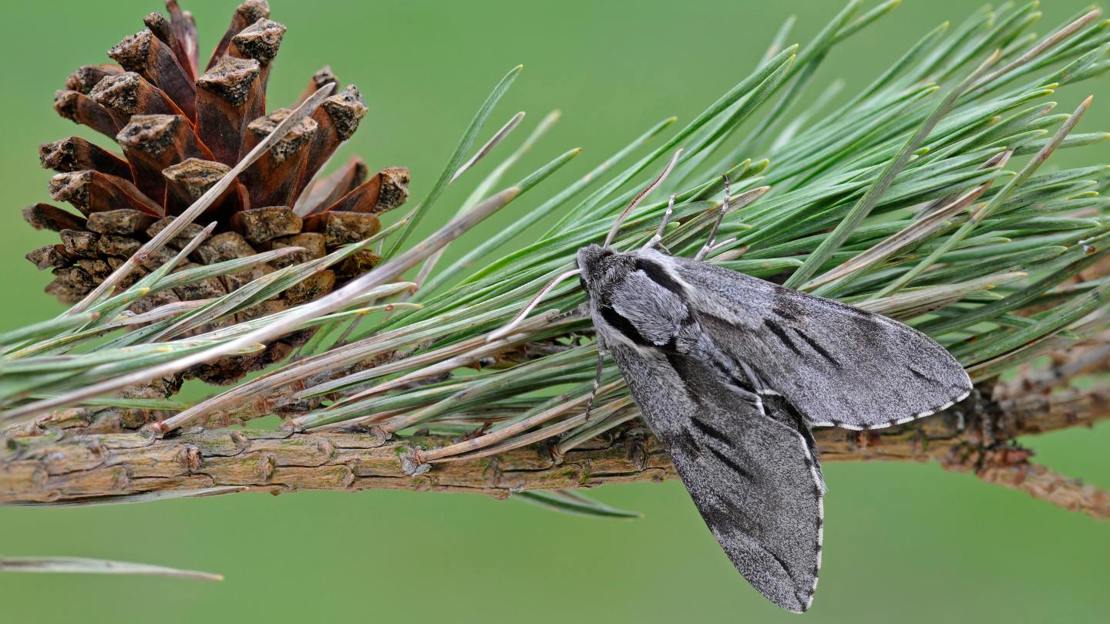
How to identify
The pine hawk-moth is a handsome grey moth with dark markings behind the head and groups of three dark streaks in the middle of each forewing. Look also for the chequered pattern on the trailing edge of the forewings.
Size
Wingspan can be up to 8cm.
When to see it
On the wing from May - August.
Where to find it
Most common in south east England and East Anglia, becoming more scarce in central England. Mostly absent from Wales, Scotland and Northern Ireland. Found in coniferous woodland, heathland and sometimes gardens.
Caterpillar foodplants
Mostly feeds on Scots pine needles, but occasionally other pines and spruces. Adults take nectar at night from honeysuckle.
8. Eyed hawk-moth (Smerinthus ocellata)
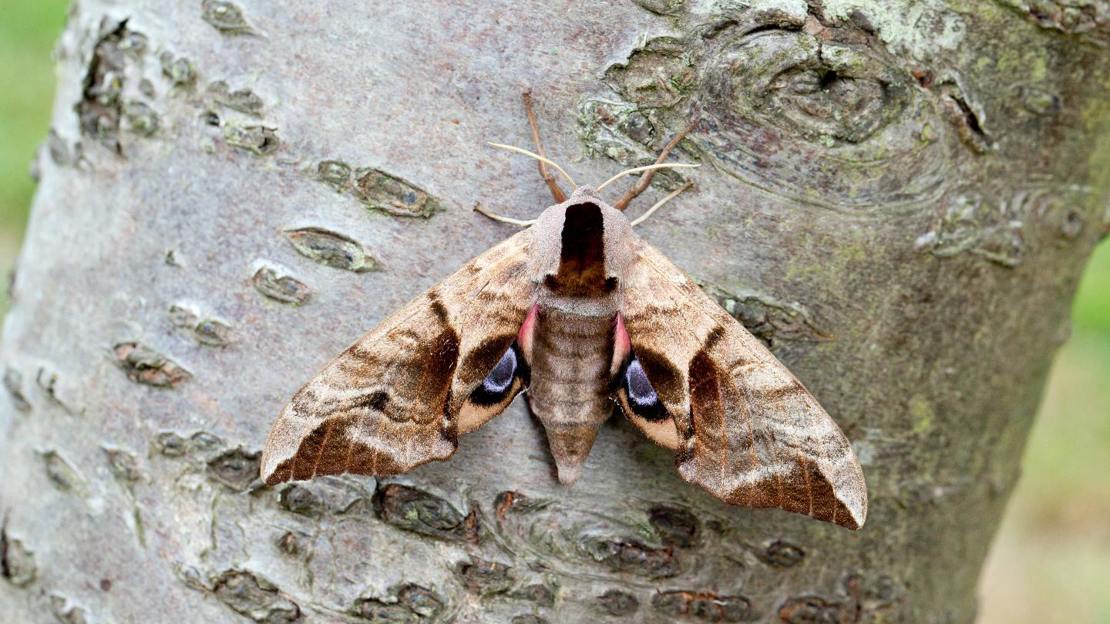
This moth does not feed as an adult but is attracted to light.
How to identify
This moth appears mostly brown when at rest, similar to the poplar hawk-moth but with a prominent dark patch behind the head. When alarmed it opens its wings to reveal large blue eyespots on pinkish hindwings.
Size
Wingspan can be up to 8cm.
When to see it
On the wing from May - July.
Where to find it
Common and widespread across England and Wales, becoming more scarce in Northern Ireland. Mostly absent from Scotland. Found in woodland, orchards, parks, gardens and riverside habitats where willows are found.
Caterpillar foodplants
Mainly willows, sallows and apples but also aspen and poplar.
9. Lime hawk-moth (Mimas tiliae)
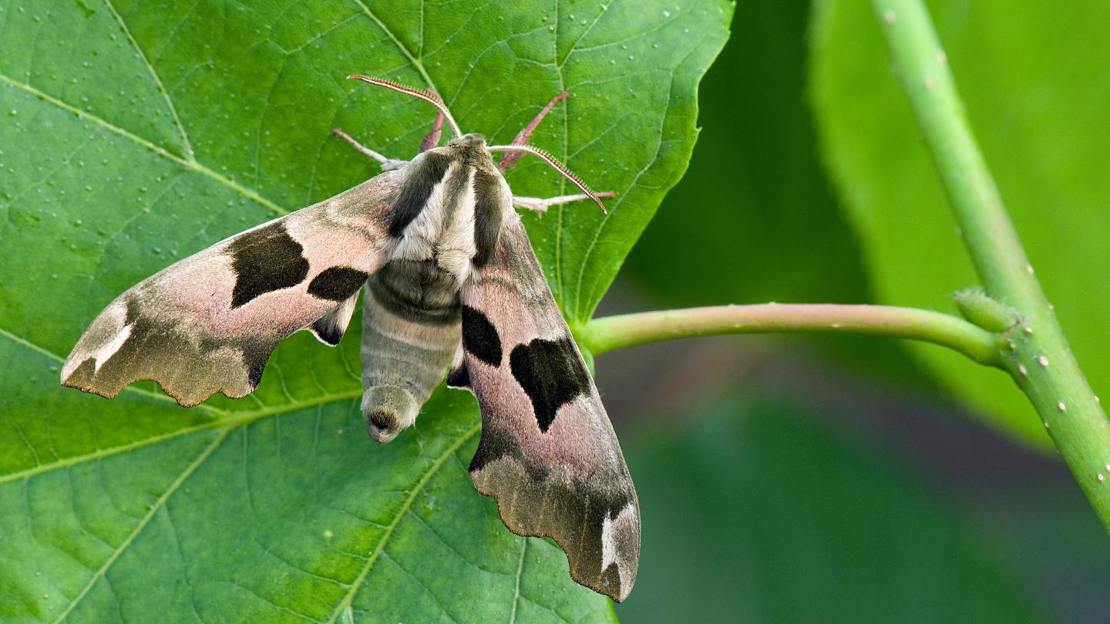
This moth does not feed as an adult but is attracted to light.
How to identify
This moth can be variable in colour, with combinations of greens, pale browns and pinks. It usually has darker patches in the centre of the forewings which are not always broken. Look also for the ragged trailing edges of the forewings and the upturned abdomen.
Size
Wingspan can be up to 7.8cm.
When to see it
On the wing from May - July.
Where to find it
Common across most of England and Wales south of the Humber but absent from Scotland and Northern Ireland. Found in woodland, parks and gardens as well as on street trees in urban areas.
Caterpillar foodplants
Limes (as the name suggests) but also a range of other deciduous trees including birch, elm, alder and London plane.
10. Convolvulus hawk-moth (Agrius convolvuli)
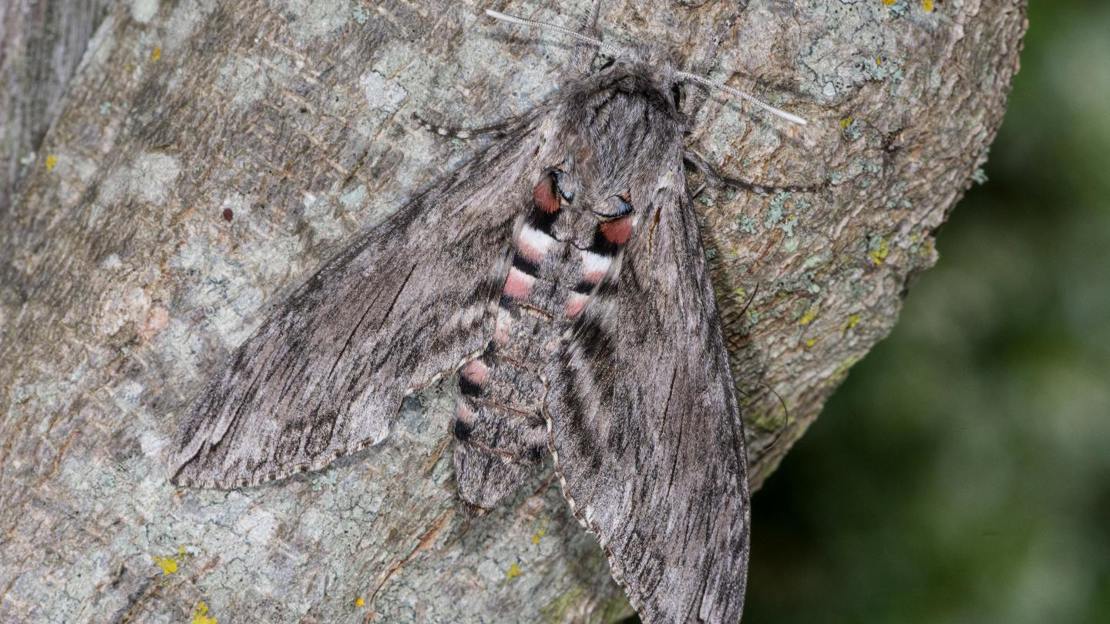
This moth's particularly long proboscis allows it to feed from tubular flowers other species cannot access.
How to identify
A streaky grey moth with pink and black bands on the abdomen. Unlike the other moths on our list it tends to lack obvious dark patches above the head or on the wings.
Size
Wingspan can be up to 12cm.
When to see it
A summer migrant to our shores most commonly encountered from August - November.
Where to find it
In good years this moth can turn up almost anywhere in the UK. Mostly spotted in gardens but can be found in a variety of habitats.
Caterpillar foodplants
Caterpillars are sometimes found in the UK on bindweeds, although they cannot survive the winter here. Adults are particularly attracted to tobacco plant but also lilies and petunias.
Create a wildlife haven in your garden
Help support pretty pollinating insects like butterflies and moths with garden trees rich in nectar and leafy forage.
Buy treesDiscover more about the UK's moths
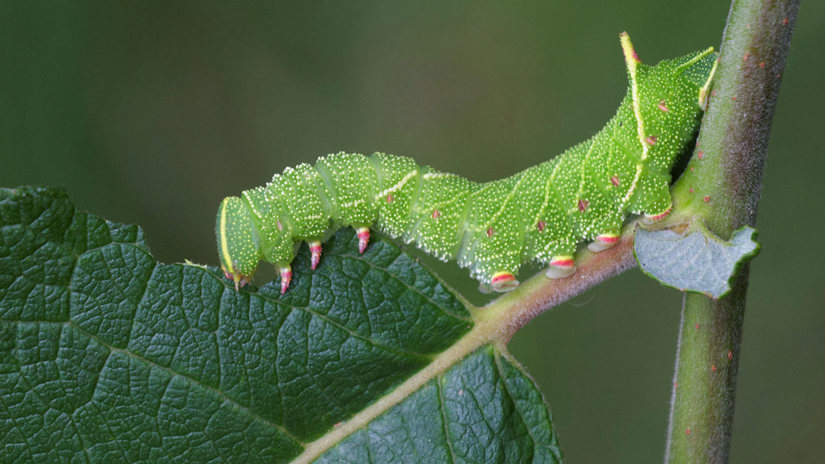
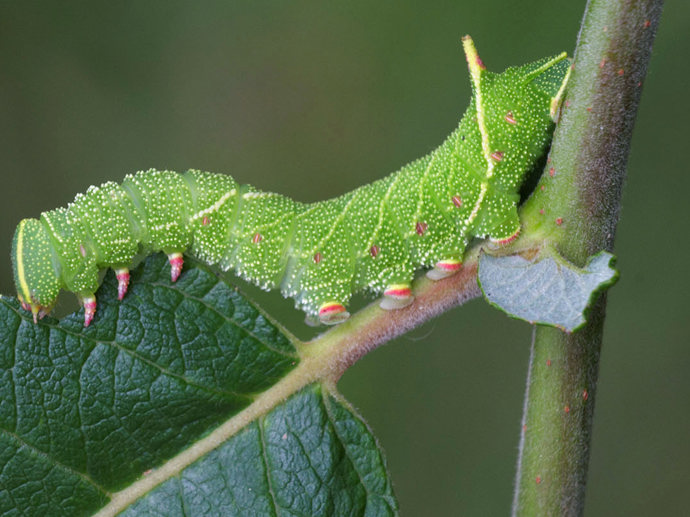
Hawk-moth caterpillar identification: eight UK species
Amy Lewis • 21 Jul 2021
Hawk-moth caterpillars have one thing in common: they're pretty impressive. Usually large, distinctively marked and with a characteristic horn at the tail end, they're a good group to get to grips with when learning who's who.


